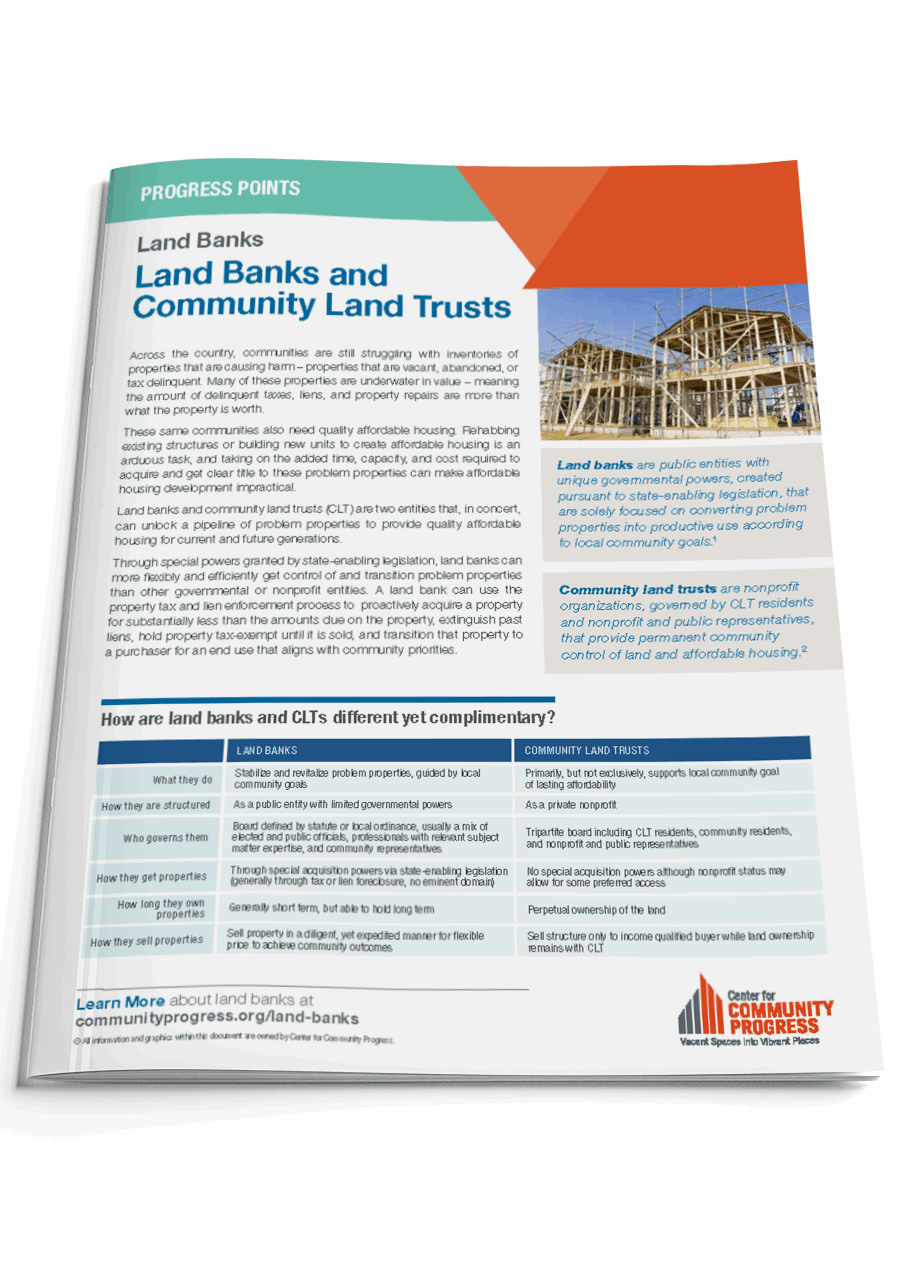Progress Points: Land Banks and Community Land Trusts
A Brief Primer
Topic(s): Land Banks
Published: January 2022
Geography: United States
Author(s): Center for Community Progress
Across the country, communities are still struggling with inventories of properties that are causing harm – properties that are vacant, abandoned, or tax delinquent. Many of these properties are underwater in value – meaning the amount of delinquent taxes, liens, and property repairs are more than what the property is worth.
These same communities also need quality affordable housing. Rehabbing existing structures or building new units to create affordable housing is an arduous task, and taking on the added time, capacity, and cost required to acquire and get clear title to these problem properties can make affordable housing development impractical.
Land banks and community land trusts (CLT) are two entities that, in concert, can unlock a pipeline of problem properties to provide quality affordable housing for current and future generations.
Through special powers granted by state-enabling legislation, land banks can more flexibly and efficiently get control of and transition problem properties than other governmental or nonprofit entities. A land bank can use the property tax and lien enforcement process to proactively acquire a property for substantially less than the amounts due on the property, extinguish past liens, hold property tax-exempt until it is sold, and transition that property to a purchaser for an end use that aligns with community priorities.
This approach offers an important alternative to a traditional tax foreclosure sale, prioritizing best local outcome over highest offer. Many communities have identified long-term affordable housing as a priority, which creates an ideal opportunity for a land bank to sell property to a CLT.
Although many variations on the model exist, CLTs most often focus on providing permanent affordable housing. CLTs are different from other nonprofit affordable housing developers in a few ways, but most critically, a CLT separates the ownership of the land and structure. The CLT retains ownership of the land and enters into a 99-year renewable ground lease with the homeowner. The homeowner purchases the structure on the land at a subsidized price, pays the mortgage on the structure and is responsible for maintenance of the land and structure.
The CLT ground lease places limits on the future sales price of the property, while also providing an opportunity for owners to build wealth from the home sale, so that the home remains accessible to low- and moderate-income homebuyers at an affordable rate in perpetuity. Typically, the development, rehab, or purchase of CLT homes is subsidized through public or philanthropic funds, and this subsidy stays with the property forever, underwriting the purchase price again and again for generations of owners.
Critical for its success, CLTs offer many pre- and post-home-purchase services to their homebuyers, such as pre-purchase counseling, down payment assistance, and foreclosure prevention to name a few. Such long-term “stewardship” services fall under the category of “perpetual responsibility,” one of the key features of the classic CLT model.
Download and share this one-page explainer today.

Topic(s): Land Banks
Published: January 2022
Geography: United States
Related Publications
Other Related Content
Subscribe to join 14,000 community development leaders getting the latest resources from top experts on vacant property revitalization.
